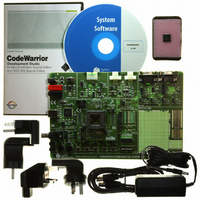EVB9S08DZ60 Freescale Semiconductor, EVB9S08DZ60 Datasheet - Page 88

EVB9S08DZ60
Manufacturer Part Number
EVB9S08DZ60
Description
BOARD EVAL FOR 9S08DZ60
Manufacturer
Freescale Semiconductor
Type
MCUr
Datasheets
1.DEMO9S08DZ60.pdf
(416 pages)
2.EVB9S08DZ60.pdf
(2 pages)
3.EVB9S08DZ60.pdf
(32 pages)
4.EVB9S08DZ60.pdf
(13 pages)
5.EVB9S08DZ60.pdf
(4 pages)
Specifications of EVB9S08DZ60
Contents
Module and Misc Hardware
Processor To Be Evaluated
S08D
Data Bus Width
8 bit
Interface Type
RS-232, USB
Silicon Manufacturer
Freescale
Core Architecture
HCS08
Core Sub-architecture
HCS08
Silicon Core Number
MC9S08
Silicon Family Name
S08D
Kit Contents
Board Cables CD Power Supply
Rohs Compliant
Yes
For Use With/related Products
MC9S08DZ60
Lead Free Status / RoHS Status
Lead free / RoHS Compliant
Available stocks
Company
Part Number
Manufacturer
Quantity
Price
Company:
Part Number:
EVB9S08DZ60
Manufacturer:
TI
Quantity:
101
- DEMO9S08DZ60 PDF datasheet
- EVB9S08DZ60 PDF datasheet #2
- EVB9S08DZ60 PDF datasheet #3
- EVB9S08DZ60 PDF datasheet #4
- EVB9S08DZ60 PDF datasheet #5
- Current page: 88 of 416
- Download datasheet (5Mb)
Chapter 6 Parallel Input/Output Control
6.3.2
A valid edge or level on an enabled port pin will set PTxIF in PTxSC. If PTxIE in PTxSC is set, an interrupt
request will be presented to the CPU. Clearing of PTxIF is accomplished by writing a 1 to PTxACK in
PTxSC provided all enabled port inputs are at their deasserted levels. PTxIF will remain set if any enabled
port pin is asserted while attempting to clear by writing a 1 to PTxACK.
6.3.3
The port interrupt pins can be configured to use an internal pull-up/pull-down resistor using the associated
I/O port pull-up enable register. If an internal resistor is enabled, the PTxES register is used to select
whether the resistor is a pull-up (PTxESn = 0) or a pull-down (PTxESn = 1).
6.3.4
When an interrupt pin is first enabled, it is possible to get a false interrupt flag. To prevent a false interrupt
request during pin interrupt initialization, the user should do the following:
6.4
Pin behavior following execution of a STOP instruction depends on the stop mode that is entered. An
explanation of pin behavior for the various stop modes follows:
88
1. Mask interrupts by clearing PTxIE in PTxSC.
2. Select the pin polarity by setting the appropriate PTxESn bits in PTxES.
3. If using internal pull-up/pull-down device, configure the associated pull enable bits in PTxPE.
4. Enable the interrupt pins by setting the appropriate PTxPSn bits in PTxPS.
5. Write to PTxACK in PTxSC to clear any false interrupts.
6. Set PTxIE in PTxSC to enable interrupts.
•
•
Stop2 mode is a partial power-down mode, whereby I/O latches are maintained in their state as
before the STOP instruction was executed. CPU register status and the state of I/O registers should
be saved in RAM before the STOP instruction is executed to place the MCU in stop2 mode. Upon
recovery from stop2 mode, before accessing any I/O, the user should examine the state of the PPDF
bit in the SPMSC2 register. If the PPDF bit is 0, I/O must be initialized as if a power on reset had
occurred. If the PPDF bit is 1, peripherals may require initialization to be restored to their pre-stop
condition. This can be done using data previously stored in RAM if it was saved before the STOP
instruction was executed. The user must then write a 1 to the PPDACK bit in the SPMSC2 register.
Access to I/O is now permitted again in the user application program.
In stop3 mode, all I/O is maintained because internal logic circuity stays powered up. Upon
recovery, normal I/O function is available to the user.
Pin Behavior in Stop Modes
Edge and Level Sensitivity
Pull-up/Pull-down Resistors
Pin Interrupt Initialization
MC9S08DZ60 Series Data Sheet, Rev. 4
Freescale Semiconductor
Related parts for EVB9S08DZ60
Image
Part Number
Description
Manufacturer
Datasheet
Request
R
Part Number:
Description:
Manufacturer:
Freescale Semiconductor, Inc
Datasheet:
Part Number:
Description:
Manufacturer:
Freescale Semiconductor, Inc
Datasheet:
Part Number:
Description:
Manufacturer:
Freescale Semiconductor, Inc
Datasheet:
Part Number:
Description:
Manufacturer:
Freescale Semiconductor, Inc
Datasheet:
Part Number:
Description:
Manufacturer:
Freescale Semiconductor, Inc
Datasheet:
Part Number:
Description:
Manufacturer:
Freescale Semiconductor, Inc
Datasheet:
Part Number:
Description:
Manufacturer:
Freescale Semiconductor, Inc
Datasheet:
Part Number:
Description:
Manufacturer:
Freescale Semiconductor, Inc
Datasheet:
Part Number:
Description:
Manufacturer:
Freescale Semiconductor, Inc
Datasheet:
Part Number:
Description:
Manufacturer:
Freescale Semiconductor, Inc
Datasheet:
Part Number:
Description:
Manufacturer:
Freescale Semiconductor, Inc
Datasheet:
Part Number:
Description:
Manufacturer:
Freescale Semiconductor, Inc
Datasheet:
Part Number:
Description:
Manufacturer:
Freescale Semiconductor, Inc
Datasheet:
Part Number:
Description:
Manufacturer:
Freescale Semiconductor, Inc
Datasheet:
Part Number:
Description:
Manufacturer:
Freescale Semiconductor, Inc
Datasheet:











